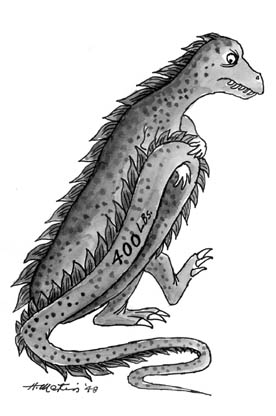|
Web Exclusives: Raising Kate April 9, 2003: The
end of the world New Yorker film critic David Denby, the cultural levee between American audiences and a summer of Steven Segal movies, spoke at McCosh 50 on March 13. The lecture, "Do Movies Have a Future?" addressed the American movie industry and the role of the critic. Denby attributed the demise of American cinema in part to the concession stand, and bemoaned the importance of popcorn profits and the sale of "Cokes so big you could drown a small rabbit in them." "I am worried about the survival of minority tastes." Denby said, pointing out that six conglomerates own eight production companies and that most films are targeted to an audience of 15-25 year-old males. Denby's lecture itself was targeted to a select audience: in this case, affluent, quasi-bohemian townies with expensive hair and avant-garde eyeglasses.
During the question-and-answer session that followed the lecture, one man asked why so many movies get two thumbs up these days. "I think Roger Ebert has generous tastes. Let's put it that way." Said Denby, before slamming Chicago, which he described as an "editing table masterpiece and choreographical disaster." The final question of the night came from a woman who wanted to know Denby's thoughts on a prediction he had made years earlier: "About 20 years ago you wrote a really memorable line, something like, 'This is not just possibly the worst movie ever made, but a vision for the end of movies.'" "Oh, it was about that John Travolta thing. Staying Alive. Well, the vision came true." Denby said. *** Jack Horner, paleontologist for the Museum of the Rockies at Montana State University, spoke to a full house at McCosh 50 on March 24. Horner discussed the early history of paleontology — the first dinosaur skeleton unearthed was found in New Jersey — as well as erroneous beliefs that plagued the science in its early years. Horner explained that scientists used to break the lower vertebrae of the dinosaurs they were reconstructing because they believed that dinosaurs dragged their tails. "Dinosaurs did not drag their tails." Said Horner, who pointed out that dinosaurs could hardly have been successful predators if they had had to lug around 400-pound appendages. The lecture attracted a varied crowd — faculty from the geosciences department, otherwise-jaded undergraduates for whom dinosaurs still hold some mystique, and elementary school-aged children. This writer sat next to a six-year old boy who spent the lecture drawing a remarkable likeness of a Stegosaurus with his crayons. Horner discussed many current hypotheses in paleontology, among them, that dinosaurs were multicolored and that spongy bone masses allowed some dinosaurs to engage in the sort of head-butting generally associated with big-horned sheep and male Cap & Gown members. Horner put forth his own contentious theory: Tyrannosaurus Rex was not the fearsome predator of popular imagination, but a lowly scavenger. "No one wants to believe that T-Rex is a scavenger." He said. "I got hate mail from sixth-graders." Horner, who served as technical adviser to Steven Spielberg during the filming of the Jurassic Park movie series, also tried to pitch his theory to Hollywood, but with little success: "I told Steven that Tyrannosaurus Rex was a scavenger. 'You can't have T-Rex chasing and eating people, Steven.' Steven looked at me and said, 'That won't sell.'" *** Spring Break has come and gone, leaving some Princeton students caught up with their academic work and others with the knowledge that tattoos are forever. Many undergraduates took advantage of cheap airfares and spent the break abroad: England and Cancun were popular destinations. The Ultimate Frisbee team traveled to Georgia for a tournament, but rowers and runners stuck it out on campus for twice-a-day practices. Most seniors — and a sizable number of juniors — stayed on campus to work on their theses or independent work. The Frist Campus Center went on abbreviated hours and closed its doors at 10 pm, to the chagrin of students tired of studying in Firestone. In most cases, scholarly discipline prevailed until the end of the week, when spring weather ultimately conspired against even the most diligent. The green spaces on campus quickly filled up with Frisbees and khaki shorts, and ambitious sunbathers briefly camped out in the courtyard of Henry Hall, only to conclude that it was still too cold for bikinis. Meanwhile, life at the Grad College, where most students are too
busy or too foreign to go home for a week, continued at its normal
pace. The D-Bar crowd on Saturday night may have been a little thinner
than usual, but the drinks were cheap and the music was loud. Cleveland
Tower, which was closed last spring due to renovations, was also
a popular hangout during break. Judging from the sign-in book, many
students used their time off to climb the tower's 207 stairs, an
ambitious undertaking that can be attributed either to the beautiful
weather or to the shortened hours of the Stevens Fitness Center.
You can reach Kate at kswearen@princeton.edu
|
|||

